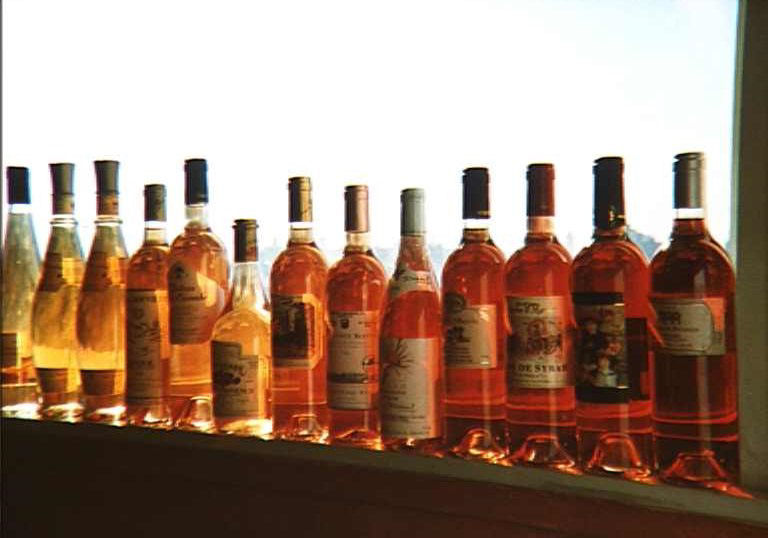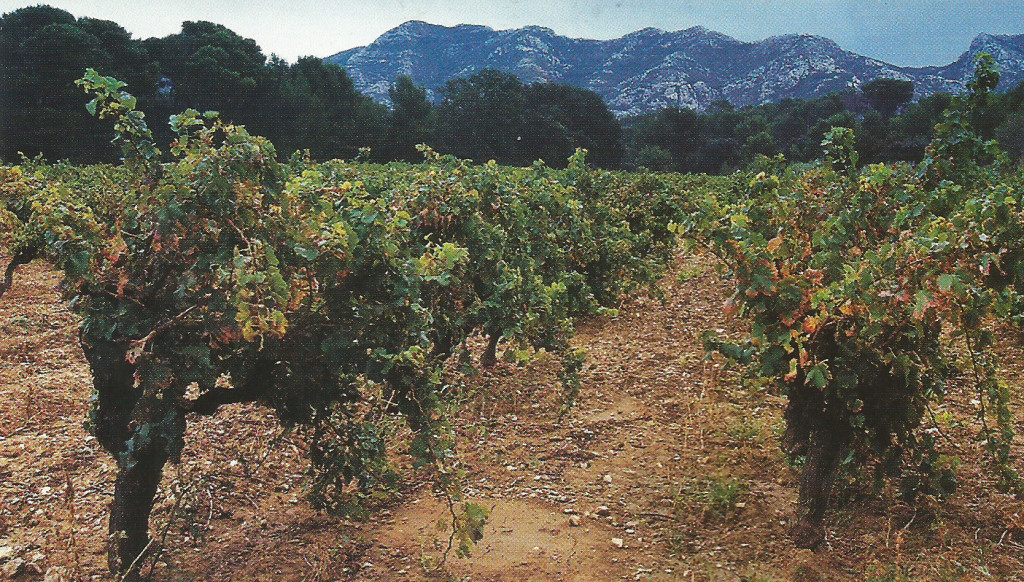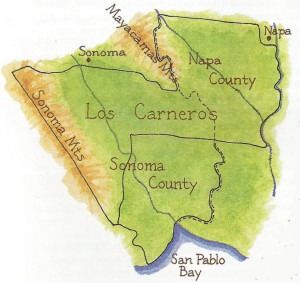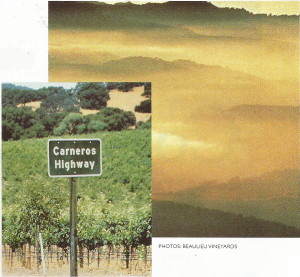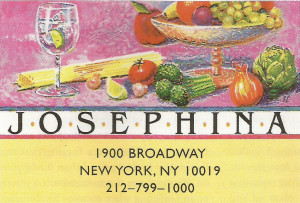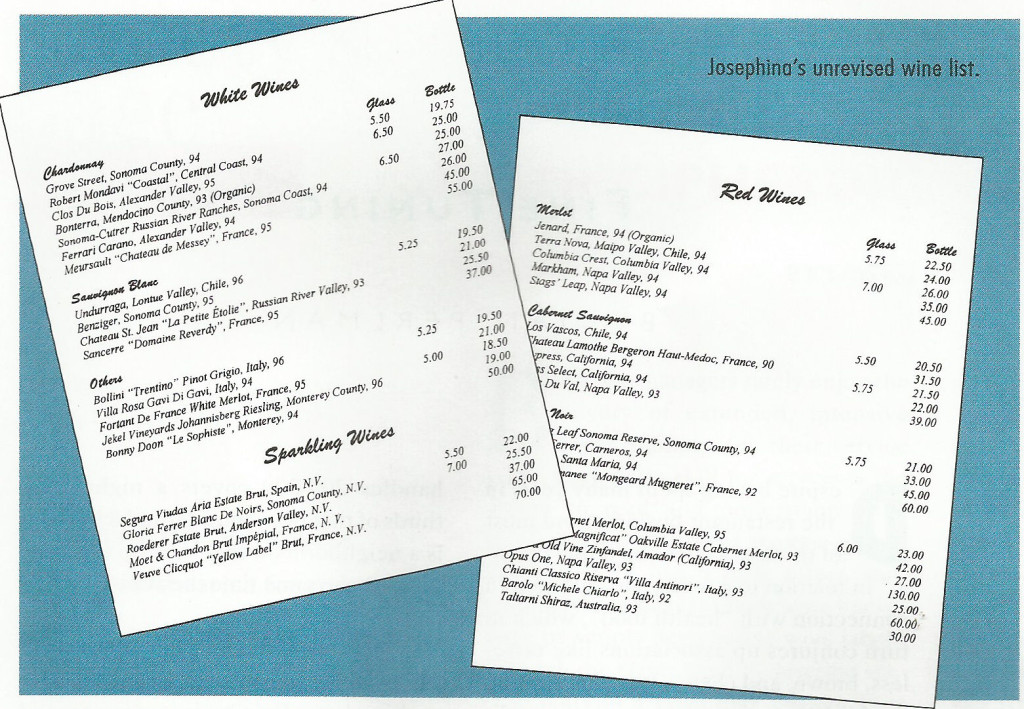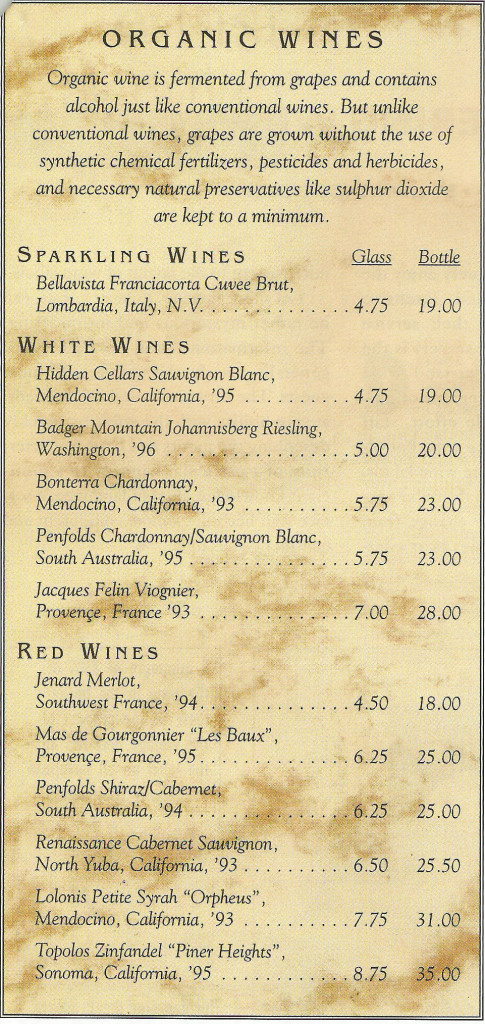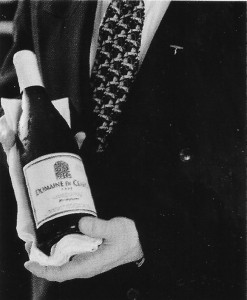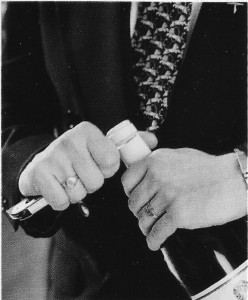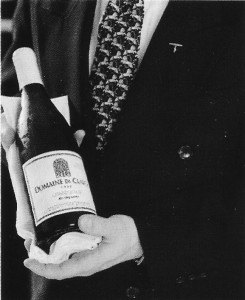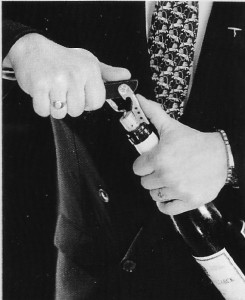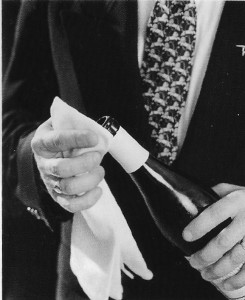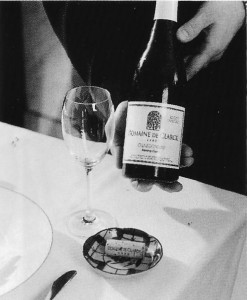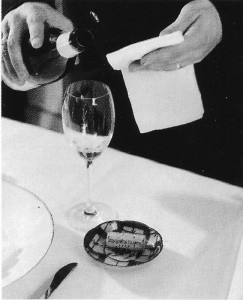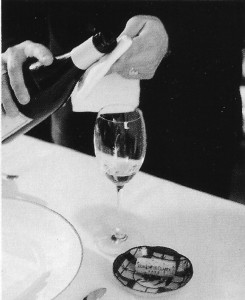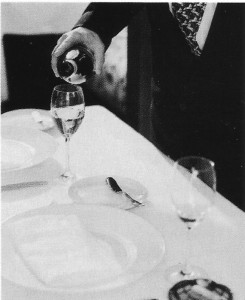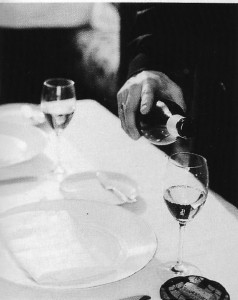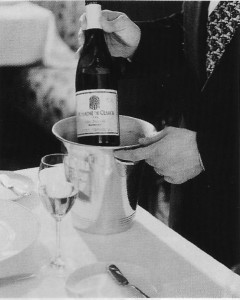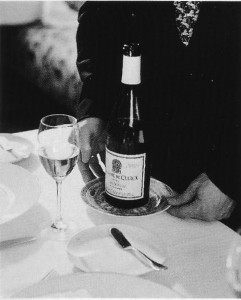Catch a Rising Star
The Magazine for Restaurant Professionals
September/October 1998
Page 42-43
Catch a Rising Star
Up until a dozen years ago, there was little to talk about besides Port and Madeira. Portuguese winemakers stubbornly held on to “traditional values,” a poor defense for wines that were generally harshly tannic and oxidized. Also, the popular appeal of Portuguese rosé that once accounted for 25 to 50 percent of the country’s wine exports to our shores faded as our homegrown White Zinfandel captured an ever-increasing share of the domestic rosé market.
In 1986, with Portugal’s entry into the European Common Market, the new guard of the country’s winemaking industry has actively sought worldwide market acceptance. Portugal, in fact, ranks around sixth in overall production volume of wine, which is not bad for a country that could fit comfortably inside the state of Indiana. This is even more impressive when you consider that less than five percent of the country is under vine.
WHAT IS A PORTUGUESE RED TABLE WINE?
General Characteristics
Beyond the many modestly priced table wines of robust and rustic character that pair well with Mediterranean cuisine, a number of good producers are fashioning some elegant wines with spicy, black fruit flavors and moderate tannins that work well with a variety of foods, including game, red meats and roasts.
Aging
Except for the top wines from the best producers from very good vintages that will age gracefully for 5-10 years or more, most Portuguese reds are ready to drink upon release.
Recent Vintages
Vintages are wildly variable, mostly due to the Atlantic influence.
1989 and 1990 – Particularly good in the Alentejo area, but only of good quality in the balance of winemaking regions.
1994 and 1995 – Absolutely outstanding throughout most of Portugal.
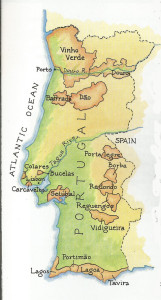 Finding Quality
Finding Quality
It is now possible to see, in virtually any retail wineshop around the country, wines labelled “Vinho Verde,” “Dão” and “Bairrada.” The grapes of Port are repackaged in dry table wine form and marketed under the Douro appellation. Portuguese restaurants are no longer limited to half a dozen selections from their homeland as the variety of wines suddenly available is staggering.
Admittedly, there is still a preponderance of inexpensive Portuguese table wine on the market. Looking through lists of available wines, the vast majority came in under $70 a case, many under $50. Having tasted quite a few of them, I believe that many make pleasant house pours and easy-drinking quaffs for casual dining. Still, customer unfamiliarity with names and places makes them a tough sell on a winelist.
My focus here is on red wines of higher quality. I began by selecting only those wines that came in at $72 or more a case. Depending on pricing schemes, this probably means wines that will sell on your list for a low in the $15-20 range. The top-end wines wholesale for more than $300.
The Best Red Wine Regions
The Portuguese appellation system, one of the earliest of its kind in establishing formal guidelines to ensure excellence, was first formed in 1756, specifically for the Douro as the home of Port wines. The current modern system focuses on two quality levels: the top DOC, or Denominacão de Origem Controlada, and a second tier, VR, or Vinho Regional. While there are now 19 classified DOC regions, most of the quality red and white wines come from the cneter to north of the country, roughly bordered by the rivers Douro and Tagus.
A bit further south in the Dão Valley, variety is the watchword. While Touriga Nacional still abounds and is required to comprise 20 percent of the blend, grapes such as Bastardo, Alfrocheiro, and Jaen pop up with abandon and add their own characteristic flavors to the mix. Here, the wines are often tannic when young, but have good fruit and backbone that will balance the tannins with age. These wines often peak at 12-15 years of age.
Neighboring Bairrada bases its wines on the Baga grape with other local varieties blended in for complexity. Rich, perfumed wines that ripen and soften with age make this area one of the shining stars in Portugal’s portfolio. Top-end gems from producers such as Luis Pato are world-class, but Bairrada is not a guarantee of quality; I found that some producers are still making tannic, oxidized-style wines that they exhibit with great enthusiasm as traditional bottlings.
There is great potential in many of the wines of central and south Portugal. José Maria de Fonseca is the leading producer of quality wine throughout the area; but as with Portugal in general, many producers in the south still employ outdated techniques in the vineyards and wineries that result in wines that are out of fashion in the U.S.
In truth, this last statement sums up the Portuguese wine industry. While much of Portugal’s vast wine industry is still dedicated to the cheap and cheerful market, quite a few good and even great wines are made. Paired with the right cuisine and promoted with enthusiasm, these exciting wines will reward your adventurous guests with an exceptional wine experience.
REVIEWER’S CHOICE
Quinta do Casal Branco / 1995 Almeirim Falcoaria
Trincadeira Preta & Castelão Francês
Rich, ripe blackcurrant fruit and spice. Absolutely delicious anytime. For the price, wow!
Quinta do Côtto / 1995 Douro Grande Escolha
85% old vine Tinta Roriz, 15% Touriga Nacional & Touriga Francesa
Ripe blackberries, bittersweet chocolate, spice and lots of depth. A stunning wine.
J.P. Vinhos / 1995 Terras do Sado Quinta da Bacalhôa
90% Cabernet Sauvignon, 10% Merlot
Ripe plums, vanilla and cocoa, very smooth. Delicious by itself or with a wide variety of meals.
NAME THAT GRAPE
Grape varieties from Portugal seem unfamiliar, not only to the average restaurant patron, but also to those of us in the trade. The Bastardo, commonly used in Dão reds and in Port, is the Trousseau of France’s Jura reds. Aragonez from the Alentejo, alias Tinta Roriz in the Douro and Tinto de Santiago in Setúbal, is known to most of us as Tempranillo, Spain’s most popular red. Mençia, from Vinho Verde in the north, is generally believed to be Cabernet Franc.
Within Portugal itself, much as they do in many other countries, grape names change from place to place. The highly regarded Periquita is alson known as Castelão Francês, João de Santarém, Mortágua and Trincadeira. Even more confusing, in some parts of Portugal, Trincaderia refers to an entirely different grape, the Tinta Amarela, resulting in wines that claim to be blends of Periquita and Trincadeira!
Caves Dom Teodósio “Cardeal Reserva” / 1990 / Dão
35% Touriga, 35% Tinta Pinheira, 30% Bastardo
Blackberry, spice and lots of structure. Tasty with meat dishes, especially game.
J.P. Vinhos “Herdade de Santa Marta” / 1993 / Alentejo
40% Periquita, 15% Alfrocheiro, 15% Tinta Carvalha, 15% Trincadeira, 15% Moreto
Cassis, raspberries and cream – medium bodied. A nice spicy choice with spicier foods.
Luis Pato “Quinta do Ribeirinho” / 1995 / Bairrada
Baga, Touriga Nacional
Pleasant, fresh raspberry and cherry fruit, smooth and well-balanced. With lighter meals, a real winner.
Quinta da Lagoalva / 1994 / Ribatejo
Periquita, Touriga Nacional, Cabernet Sauvignon
Leathery, gamey notes with dark fruit to back it up. For the price, a great glass of wine with red meats.
Quinta das Setencostas / 1996 / Alenquer
Periquita, Tinta Miuda
Raspberry liqueur coated with milk chocolate. A tasty pre-dinner quaff with lots of fruit.
Quinta do Casal Branco “Falcoaria” / 1995 / Almeirim
Trincadeira Preta & Castelão Francês
Rich, ripe blackcurrant fruit and spice. Absolutely delicious anytime. For the price, wow!
Sogrape “Reserva” / 1995 / Douro
Touriga Francesa, Touriga Nacional, Tinta Roriz, Tinta Barroca, Mourisco & Bastardo
Raspberry, spice and good structure. A nice choice with all sorts of dishes.
Caves Velhas Romeira “Garrafeira” / 1991 / Palmela
Periquita & Trincadeira Preta
Earthy, dark fruit, some oak and spice. Slightly hot, but a good choice with spicier foods.
José Maria da Fonseca “Quinta de Camarate” / 1991 / Terras do Sado
75% Castelão Francês, 25% Cabernet Sauvignon
Dusty, bright berry fruit and a touch of tannins. A tasty choice with deep sea fish, pasta and rice dishes.
J.P. Vinhos “Quinta da Bacalhôa” / 1995 / Terras do Sado
90% Cabernet Sauvignon, 10% Merlot
Ripe plums, vanilla and cocoa, very smooth. Delicious by itself or with a wide variety of meals.
Quinta da Lagoalva de Cima “Special Reserva” / 1992 / Ribatejo
85% Periquita, 15% Syrah
Ripe blackberries, pepper, slightly tannic and fairly alcoholic. Needs some time.
Quinta da Pellada Touriga Nacional / 1996 / Dão
40% Alfocheiro, 60% Touriga Nacional
Smooth, ripe cherry fruit, spicy. Delicious with fish and fowl.
Quinta do Carvalhinho Cabernet Sauvignon / 1995 / Beiras
100% Cabernet Sauvignon
Ripe plums, cedar, chocolate. Delicious on its own or with meats.
Quinta do Carvalhinho Garrafeira “Casta Baga” / 1990 / Bairrada
100% Baga
Ripe plums and peaches, good spice and well balanced. A really good choice with lighter meats.
Quinta do Crasto / 1995 / Douro
50% Tinta Roriz, 30% Tinta Barroca & 20% Touriga Francesca
Cherries, spice and vanilla. A good choice with lighter meats.
Quinta do Crasto Reserva / 1995 / Douro
Old vine blend
Cherries, earthiness, spice and a nice touch of oak. The concentration makes it a great choice with pastas, mushrooms and meat.
José Maria da Fonseca “Garrafeira CO” / 1990 / Arrábida
mostly Castelão Francês
Rich, spicy, blackberry fruit. Perfect with small game and game birds, or lamb dishes.
José Maria da Fonseca “Garrafeira TE” / 1990 / Arrábida
65% Camarate, 35% Cabernet Sauvignon
Milk chocolate covered cherries. Delicious on its own or with a heavier dinner.
José Maria da Fonseca “Periquita Clássico” / 1992 / Terras do Sado
70% Castelão Francês, 25% Espadeiro & Monvedro, 5% Bastardo
Rich, ripe fruit, cedar and tobacco. One of the more complex selections and needs some time.
Luis Pato “Vinha Pan” / 1995 / Bairrada
100% Baga
Ripe black cherries, licorice, and spice. Very young and fairly tannic.
Luis Pato “Vinha Barrossa” / 1995 / Bairrada
100% Baga
Even more concentration than the Vinha Pan, but similar profile. Black cherries, licorice, and spice. Needs time.
Quinta do Côtto “Grande Escolha” / 1995 / Douro
85% old vine Tinta Roriz, 15% Touriga Nacional & Touriga Francesa
Ripe blackberries, bittersweet chocolate, spice and lots of depth. A stunning wine.
Santé is a glossy format trade magazine for restaurant wine buyers and educators. I wrote as a freelancer for them on and off from the first issue in November 1996 until November 2002 when they decided to stop using freelance writers.


